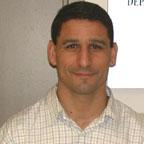During #DPTstudent chats, there has been many great conversations and debates. However, it seems that some of the debates end with phrases along the lines of, “that’s where clinical reasoning comes in,” or “that’s where we use critical thinking.” What are these vague terms and what is a #DPTstudent supposed to do when that’s the final, definitive statement of an interactive discussion?!
Often, it seemed the terms clinical reasoning and critical thinking were being used interchangeably. So, I began to wonder what these terms meant, how they are different, and how they are the same. Is this some sort of common denominator for all PT-speak? Or, are people just applying these terms willy-nilly? I decided to investigate.
According to: The Foundation for Critical Thinking, critical thinking is:
1) A set of information, belief generating and processing skills
2) The habit, based on intellectual commitment, of using those skills to guide behavior.
And more importantly, is Not:
1) The mere acquisition and retention of information alone, because it involves a particular way in which information is sought and treated;
2) The mere possession of a set of skills, because it involves the continual use of them
3) The mere use of those skills (“as an exercise”) without acceptance of their results.
In other words, critical thinking is the process of constant evaluation and application of available information, including analyzing your results. To me, it sounds a lot like another oft-employed term: evidence-based practice.
In the article: Thinking and Reasoning in Medicine, (Vimla L. Patel, Jose F. Arocha, and Jiajie Zhang) describes three components of clinical decision making:
(a) Choice options and courses of actions
(b) The belief about objective states, processes, events, outcomes and means to achieve them
(c) Ideas of the consequences associated with the outcomes of each action-event combination.
The overlap, and thus breakdown, between clinical reasoning and clinical decision-making occurs with confirmation bias, or searching for evidence to confirm a preconceived hypothesis. Critical thinking is constantly required to recognize these biases we all possess, and continue to analyze and challenge them by considering other potential courses of action.
A classic example I have observed in my short time in the clinic is the SI joint confirmation bias conundrum. In school, we learned how poorly reliable, and questionably valid many SI joint tests are. We also learned how many manual therapy effects are not specific in terms of spinal level, or even side. However, when assessing SI joints, many therapists hold tenaciously to their belief that they can detect, and then treat specific biomechanical malpositions of this very firmly structured joint. “Do you feel that? Yep, that’s an upslip on the right,” I would hear so many times. Follow-up questions would be posed in a format of confirmation rather than pure inquiry. Confirmation bias. Clinical reasoning fail.
In his famous book about diagnostic clinical reasoning, “How Doctors Think,” author Jerome Groopman cautions that a primary rule for becoming a great diagnostician is to not get boxed into one frame of thought. That sounds reasonable enough to me. Perhaps this is much more difficult in practice, especially considering the nuances to becoming a good clinical thinker.
Critical thinking and clinical decision making are difficult. It certainly isn’t for the faint of heart, when so often we’re forced to face honest assessments of how little we actually know. So, next time your ideas and opinions are questioned and you feel cornered, don’t resort to the catch-phrases of critical thinking and clinical reasoning as a defense. They’re not a “get out of jail free” card. Recognize the opportunity to expand you understanding of other methods and models of thought that you’re perhaps less familiar with.
Don’t be afraid.
I’ll leave you with one of my favorite quotes:
“But, if thought is to become the possession of many, not the privilege of the few, we must have done with fear. It is fear that holds men back — fear lest their cherished beliefs should prove delusions, fear lest the institutions by which they live should prove harmful, fear lest they themselves should prove less worthy of respect than they have supposed themselves to be.”
~ Bertrand Russell (Principles of Social Reconstruction)











 Our new
Our new 